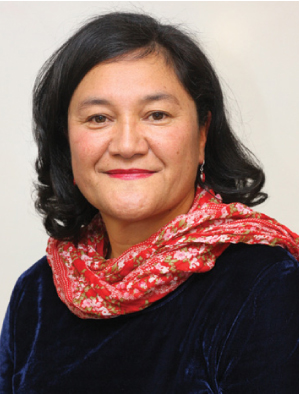From the CEO
Jul 18, 2014

 Chief Executive Officer,
Chief Executive Officer,
Te Rūnanga o Ngāi Tahu,
Arihia Bennett
Whanaungatanga in action
Twenty years ago our whānau made a deliberate move from the city to create an intergenerational home in Tuahiwi. We have seen three generations and now a fourth spending time together in the family home. As well as sharing all the living costs, the practical benefits are numerous as there are cooks, gardeners, housekeepers, babysitters, dogsitters, caregivers, drivers, te reo translators, teachers, rugby/league analysts, and health advisors – all on tap. Creating this type of shared whānau environment is a no-brainer, and on top of that, there is always someone at home to get the washing in when it rains!
As changes occur in our household I have been looking at this living arrangement through another lens. After long working careers, both my parents have retired. Their focus now is on quality of life in their retirement years ahead, and this means ensuring they maintain good health, remain socially engaged, and adjust financially. These well-being goals are not new to any of us, but I do believe it is made easier when you have the generational support within the home.
Recently my father experienced a health emergency. Navigating our way through the hospital system was a daunting experience with specialists, consultants, and doctors all doing their clinical rounds at different times throughout the day. The health services received were outstanding, but it was important to stay well informed on progress and to ask the probing questions so our whānau clearly understood the support steps needed at home.
It’s no secret that our population is aging, and health services will need to pivot so that they become more community and prevention oriented. As an iwi we should be planning ahead – inviting our rūnanga and kāika to think about the future and how we will support our kaumātua during their retirement years. Do we see this as a tribal or whānau responsibility? Does this mean creating a shared living kaumātua environment, similar to that of kaumātua cottages or a retirement village setting connected to the marae? Or does it mean creating communities where intergenerational whānau can either live together or live close by in a cluster-like village setting?
I’m in favour of this being a whānau responsibility – perhaps developing the cluster-like setting, as this lends itself to a mixture of generational interaction and reinforces the important relationships that pōua and tāua have with their mokopuna. Knowledge transfer is bound to be experiential, and this will happen seamlessly without effort. There is richness in this approach, as kawa can be passed on through practical rituals that will then remain in the whānau.
Our intergenerational whānau household has already created kawa that is unique and specific to our extended whānau. If you haven’t already done this, maybe it’s time to take stock and create a cluster setting of your own – you won’t regret it!